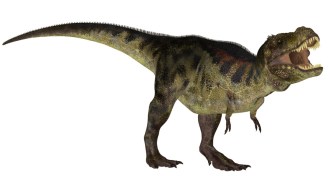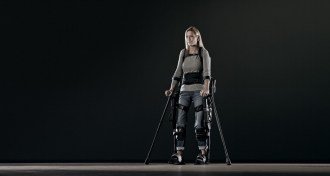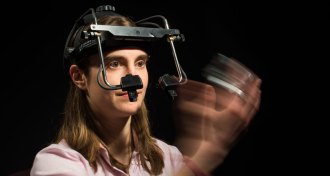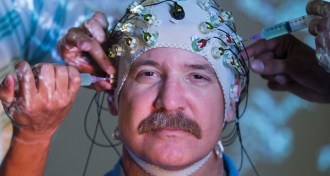Neuroscience
-
 Neuroscience
NeuroscienceThe Inconstant Gardener
Microglia, the same immune cells that help sculpt the developing brain, may do damage later in life .
By Susan Gaidos -
 Health & Medicine
Health & MedicineNicotine withdrawal linked to specific brain cells in mice
A group of cells within one brain region may control the physical symptoms that plague people trying to kick their cigarette addiction.
-
 Neuroscience
NeuroscienceBrain reconstruction hints at dinosaur communication
T. rex and other dinos might have understood complex vocal calls.
-
 Neuroscience
NeuroscienceTeenagers act impulsively when facing danger
Brain activity may help explain why crime peaks during the teenage years.
-
 Neuroscience
NeuroscienceAnother look at paralysis
Robotic suits help paralyzed people move, but simple behavior changes may prevent the accidents that cause the injuries.
-
 Neuroscience
NeuroscienceBacteria may transfer mom’s stress to fetus
Expecting mice under psychological pressure passed different mix of microbes to their pups, affecting the babies’ brains.
-
 Neuroscience
NeuroscienceMold chemical linked to movement disorder
Fruit flies’ brains and human cells show Parkinson’s-like changes when exposed to fungi toxin.
-
 Neuroscience
NeuroscienceBrain patterns of haunting memories
Some fearful experiences stick with us forever. Others we brush off easily. The difference could be in which neuronal patterns are activated in our brains.
By Emilie Reas -
 Neuroscience
NeuroscienceMonkeys control two arms in virtual reality
A new brain-computer interface has enabled movement of two virtual limbs at the same time.
-
 Neuroscience
NeuroscienceAutism may be detectable in baby’s first months of life
Infants later diagnosed with an autism spectrum disorder lose tendency to gaze at others’ eyes during first half-year, researchers find.
-
 Neuroscience
NeuroscienceBrain enables sight without light
Sensory cross talk may underlie ability to see one’s own hand moving when it’s pitch black.
By Bruce Bower -
 Neuroscience
NeuroscienceMind to motion
Brain-computer interfaces promise new freedom for the paralyzed and immobile.
By Meghan Rosen